The Berkshires Bowling Alley that Inspired "The Big Lebowski"
It’s been 36 years since the release of The Big Lebowski, the irreverent cult comedy by Joel and Ethan


Boasting a fifteenth-century classical exterior and ten rooms filled with a range of historical and contemporary craft, art, and design pieces, all rendered at about the size of a hand, The Fisher Dollhouse: A Venetian Palazzo in Miniature opened to the public this past weekend at the Museum of Arts and Design. For those that wish to step into the dollhouses secret rooms, the exhibit will be open until September 26, 2021. Viewing the Fisher Dollhouse is free with museum admission.
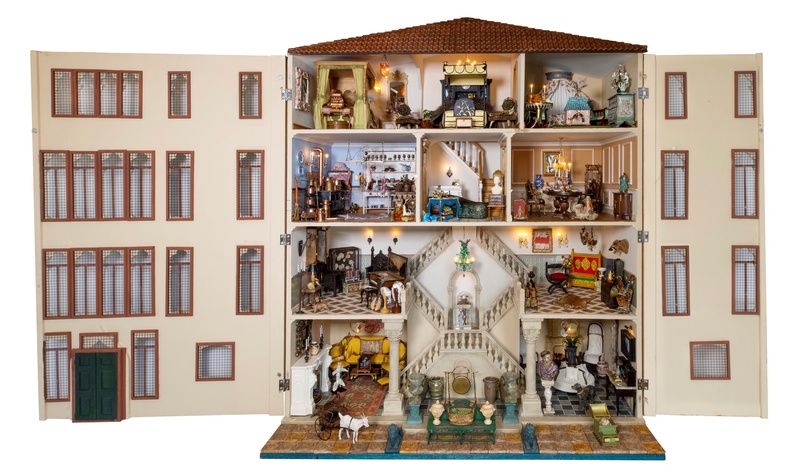
The Fisher Dollhouse was conceived by New York collector, maker, and arts patron Joanna Fisher in response to the COVID-19 pandemic. Being housebound and separated from her loved ones, Fisher chose not to let the experience tear her down. Instead, she embraced it, using the exhibit as a form of therapy and safe haven to cope with the stresses of quarantine. For Fisher, the dollhouse represents “a place people can go to in their minds [and] an emotional home I found within myself.”
While the creation of the dollhouse served as a coping mechanism for Fisher in her isolation, the experience of curating it also brought her closer to others. More than ten artists from around the world were brought together in collaboration to create the exhibit. The dollhouse itself was made by British set designer Holly Jo Beck, drawing structurally in influence from the Palazzos da Mula Morosini and Bernardo a San Polo and evoking memories of the Gritti Palace in Venice. Some striking highlights of artwork within the house include two stunning Murano-style glass chandeliers by Spanish artists Mario Ramos and Mariana Grande, a Baroque style fireplace by British maker Sue Doviso, and a Venetian style bust of Julius Caesar by Spanish miniaturist David Castillo.
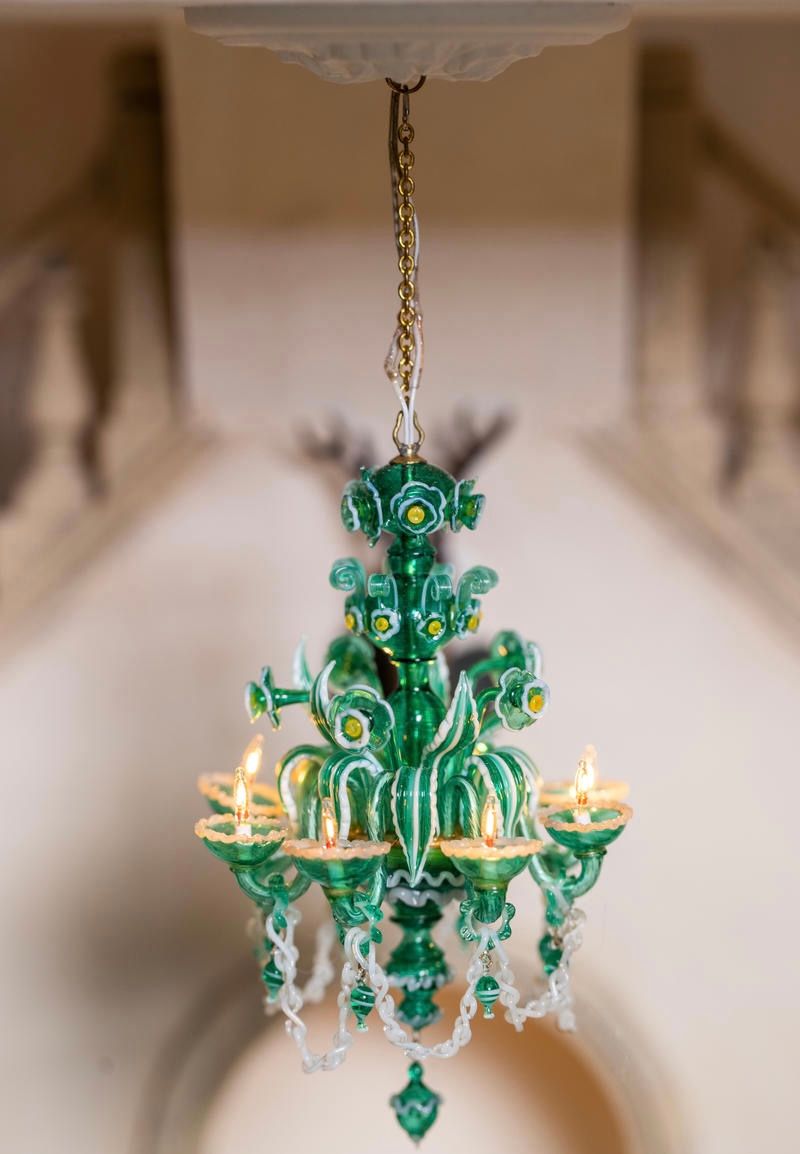
Often, when we think of dollhouses today, we see them as toys for use by children to expand their sense of imagination and emotional freedom. But there is a long history associated with dollhouses. Dollhouses were originally created for the purpose of display, being first built around the 17th century in northern Europe for adult usage. Known in Holland as “cabinet houses,” these structures stood as symbols of social class and status, with families using them to show off their expensive and often rare collection of miniature items. As time passed, these structures grew to more and more resemble the furniture within their owner’s homes, directly reflecting elements of their inner lives.
In many ways, The Fisher Dollhouse: A Venetian Palazzo in Miniature reflects these early dollhouse traditions, with the exhibit being devoid of any dolls inside to be physically manipulated for play. Rather, its filled interior, replete with decorations, suggests a space open and ready for contemplation by its audience.
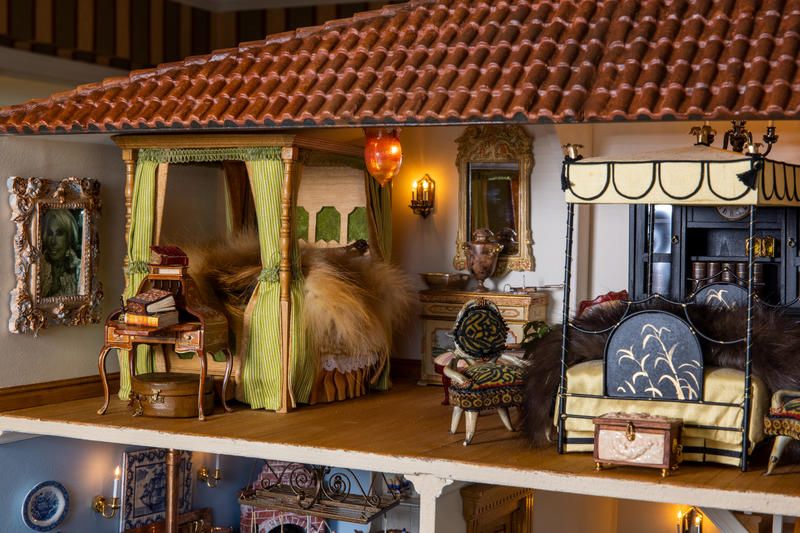
Moreover, though dollhouses remained hidden from the wider public eye for much of their earlier history, today, these structures and the world of miniature objects today are directly in the spotlight. Interest in dollhouses and miniatures is rising, enthralling a new and younger generation through social media engagement with multitudes of Etsy, Pinterest, Tumblr, and Youtube vlogs showcasing dollhouses and their furniture for the world to admire. In 2015, the $8.5 million Astolat Dollhouse went on display in Columbus Circle. As exhibits like The Fisher Dollhouse: A Venetian Palazzo in Miniature showcase, dollhouses to this day continue to hold social relevance.
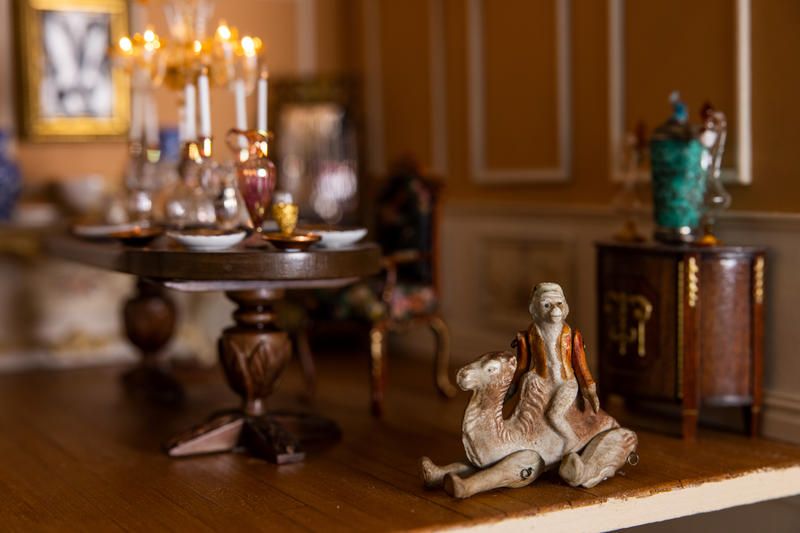
One dollhouse in particular which the exhibit draws upon for inspiration includes the Museum of the City of New York’s Stettheimer Dollhouse. As well, Queen Mary’s Dollhouse, presented to the royal family in 1942, and currently on display at Windsor Castle served as a crucial point of reference for the dollhouse, with certain objects commissioned for it being replicated for The Fisher Dollhouse: A Venetian Palazzo in Miniature.
As an ode to the real world, The Fisher Dollhouse: A Venetian Palazzo in Miniature also bears much resemblance as a miniature version of Peggy Guggenheim’s Palazzo Venier dei Leoni. Commissioned by the Venier family in 1794, the Palazzo was prevented from being fully completed, with only the first of its originally planned five floors being built. Since its creation, the Palazzo has changed hands numerous times, moving from the Levi family, to the wealthy heiress Marchesa Luisa Casati Amman, before finally being purchased by Peggy Guggenheim in 1949, who made it her home for thirty years—over which she hosted many exhibitions of her collection within it. Eventually, following her death, the Peggy Guggenheim Collection was opened in 1980 and continues to this day. The Fisher Dollhouse: A Venetian Palazzo in Miniature, stands as a modern continuation of Boschetti’s work, extending the legacy of the Palazzo all the way across the Atlantic Ocean.
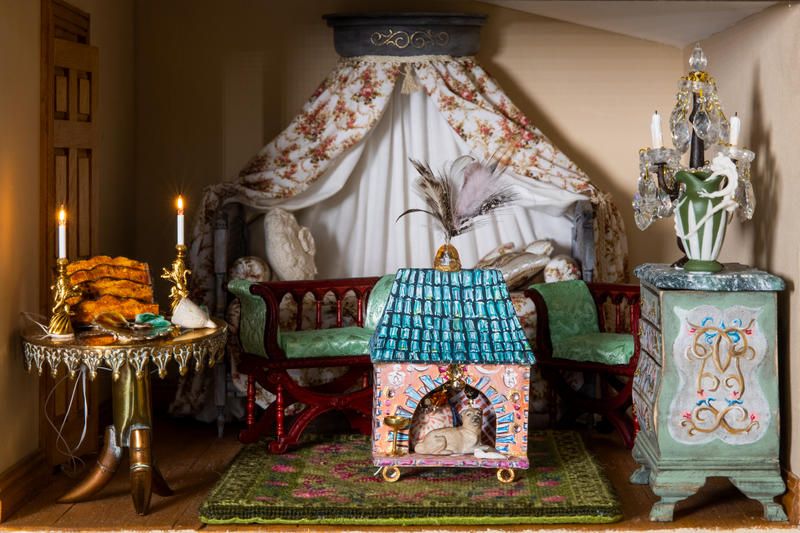
In a press release from the Museum of Arts and Design, the exhibit was likened to being a “house within a house,” quoting the words of poet and critic Susan Stewart in On Longing: Narratives of the Miniature, the Gigantic, the Souvenir, the Collection, written more than thirty years ago in 1984. Referencing Stewart, the press release stated, “the dollhouse exposes tensions between the inside and outside worlds. Sanctuary and prison, this ‘most consummate of miniatures’ also confronts ‘the accessibility of what cannot be lived.’” As the audience gazes upon the dollhouse, it becomes easy to be drawn into the fantastical world it displays—one which mimics reality, but also distorts it in emulation of perfection.
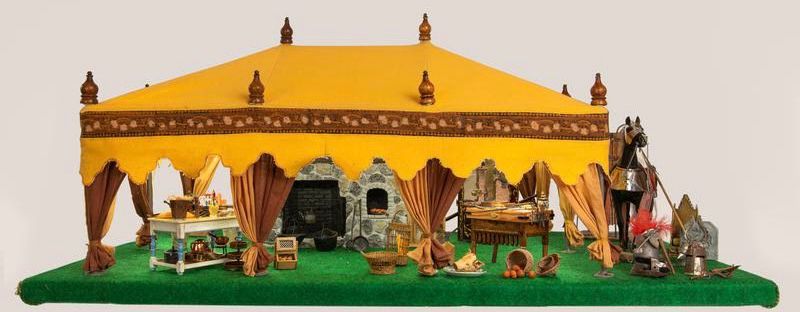
Though the dollhouse serves as the focal point of the exhibit, visitors will also be able to view accompanying gallery, grotto, and festival tents. These additions to the overall exhibit work to combine various miniature works of art in an effort to bring the world of the fifteenth-century to life. As well, the exhibit will include selected photos and short videos of the individual pieces within the dollhouse and the artists creating their work. As of right now, The Fisher Dollhouse: A Venetian Palazzo in Miniature, remains a work in progress, one which Fisher plans to return to again in the future.
Next, check out the Top 10 Secrets of Columbus Circle.
Subscribe to our newsletter